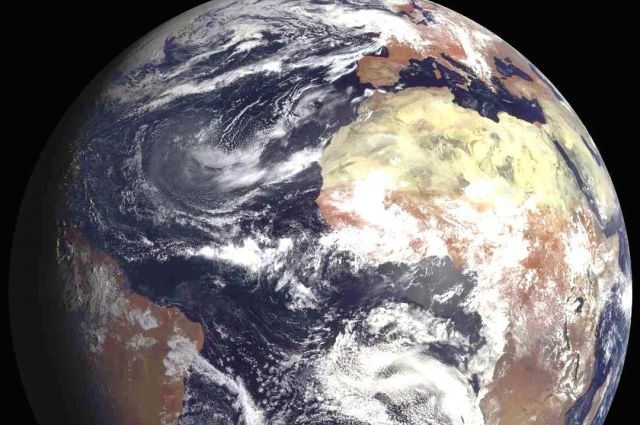
In the scientific world, there is still no consensus on the origin of water on our planet. Some believe it was brought by asteroids or comets around 4 billion years ago, at an early stage in the formation of the Earth. Other – that it was released from the bowels of the earth as a result of chemical reactions.
In an article recently published in the journal Physical Review Letters, Professor Skoltech Artyom Oganovand his Chinese colleagues support the second hypothesis. They name a substance that could hold water in the depths of a young planet at a time when it has completely evaporated from its surface in catastrophic collisions with other celestial bodies. It should be noted that this substance does not exist on modern Earth, but scientists were able to predict it.
Why didn't the ocean evaporate?
Every schoolboy knows the importance of water for the emergence of life on earth and its evolution. This chemical compound performs the most important functions – for example, the seas and oceans stabilize the climate. If this did not happen, it would be harder for life to gain a foothold on the planet and mass extinctions of organisms would occur more often. Moreover, even small amounts of water soften the rocks, penetrate them, and when they freeze, they destroy them. This provides plate tectonics, which in turn is responsible for the shape of continents, earthquakes, volcanic activity, etc.
Despite the important role of water in the history of the Earth, scientists do not know where it came from in a volume so large that it was enough for the world ocean . It's a long scientific mystery. “It has been speculated that comets could bring us water, but, apparently, the importance of this source is very small. The fact is that the isotopic composition of the water on Earth and in comets differs significantly, ”says Professor Skoltech, crystal chemist Artyom Oganov.
Since water does not come from outer space, it means that it somehow comes from the bowels of the earth, from the minerals it contains. In this case, it is unknown how the ocean was able to survive the turbulent stage of Earth's history, when the planet was red-hot, subjected to a massive bombardment of asteroids and even collided with another celestial body that gave birth to the moon. All of these cataclysms were supposed to permanently evaporate liquid water from the surface of the planet. Scientists did not know of such a substance that could keep it at great depths for millions of years and release it in calmer times.
And now they were able to name it and to derive its chemical formula. It is magnesium hydrosilicate, Mg2SiO5H2.
What is surprising about this discovery?
The work was carried out by Russian and Chinese researchers. Artyom Oganov is known as the author of the USPEX crystal structure prediction method. Using this method, Chinese scientists led by Nankai University professor Xiao Dongused computer simulations and predicted the existence of the compound Mg2SiO5H2 on early Earth. It is stable at high temperatures and pressures (more than 2 million atmospheres – as in the earth's core) and could theoretically be present in the intestines even before the formation of this core, when the planet was chemically homogeneous.
Magnesium hydrosilicate contains 11% water by weight. After the core formed and separated, the pressure in the mantle dropped and this mineral, according to the study authors, decayed, releasing a huge amount of water. It took about 30 million years: during this time, iron concentrated in the center of the Earth (everyone knows that the core is made of it) and expelled silicate minerals from there to an area of lower pressures, where they proved unstable and dilapidated. Thus, magnesium oxide and silicate, which make up the mantle, were formed, as well as water, the gradual release of which to the surface took another 100 million years. Scientists know that already 120 million years after the appearance of the Earth's core, there were oceans on the planet.
Artyom Oganov points out that the discovery made is surprising in that “matter that existed at a real moment on the scale of the history of the planet had an enormous impact on the evolution of Earth”. Moreover, it is very important for understanding the evolution of other celestial bodies. “Take, for example, Mars. It is too small to provide pressures at which magnesium hydrosilicate is stable, – says the scientist. – This explains why there is so little water on Mars. Also, the water which is, most likely, was brought by comets.
And the Chinese researcher Xiao Dong suggests that this scientific work will help in the study of planets outside the solar system: “For an exoplanet to be habitable , you need a stable climate, and for that there must be both oceans.It was believed that the mass content of water on a terrestrial planet, regardless of its size, should not exceed 0.2% Our results suggest that on massive planets of this type (the so-called super-Earths) things are probably different.There the pressures that stabilize hydrated magnesium silicate exist outside the core, and these planets can retain large amounts of water in the mantle indefinitely. This means that they can have continents and oceans with much higher water content than expected. />

